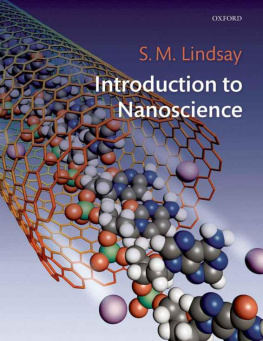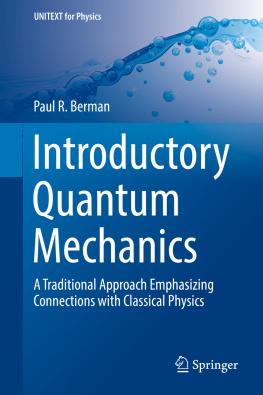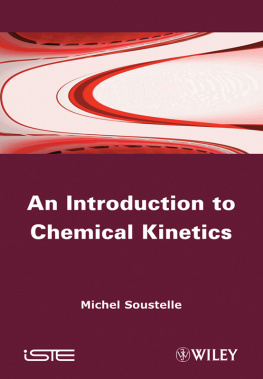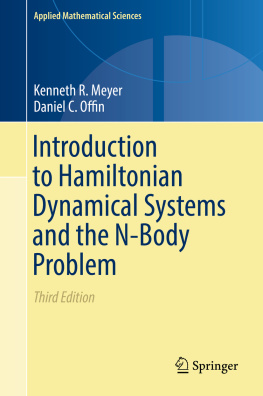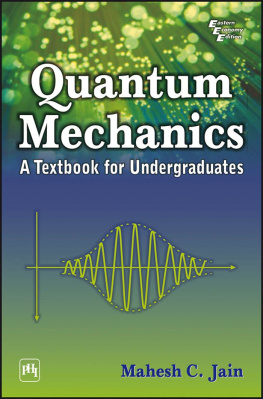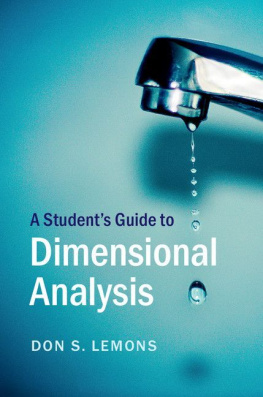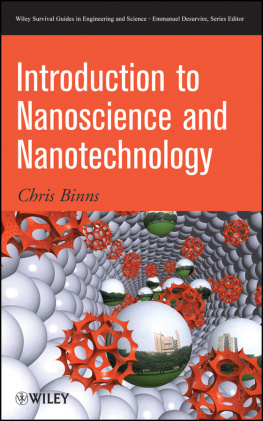INTRODUCTION TO NANOSCIENCE
Introduction to Nanoscience
S.M. LINDSAY
Arizona State University


Great Clarendon Street, Oxford OX2 6DP
Oxford University Press is a department of the University of Oxford.
It furthers the Universitys objective of excellence in research, scholarship,
and education by publishing worldwide in
Oxford New York
Auckland Cape Town Dares Salaam Hong Kong Karachi
Kuala Lumpur Madrid Melbourne Mexico City Nairobi
New Delhi Shanghai Taipei Toronto
With offices in
Argentina Austria Brazil Chile Czech Republic France Greece
Guatemala Hungary Italy Japan Poland Portugal Singapore
South Korea Switzerland Thailand Turkey Ukraine Vietnam
Oxford is a registered trade mark of Oxford University Press
in the UK and in certain other countries
Published in the United States
by Oxford University Press Inc., New York
S.M. Lindsay 2010
The moral rights of the author have been asserted
Database right Oxford University Press (maker)
First Published 2010
All rights reserved. No part of this publication may be reproduced,
stored in a retrieval system, or transmitted, in any form or by any means,
without the prior permission in writing of Oxford University Press,
or as expressly permitted by law, or under terms agreed with the appropriate
reprographics rights organization. Enquiries concerning reproduction
outside the scope of the above should be sent to the Rights Department,
Oxford University Press, at the address above
You must not circulate this book in any other binding or cover
and you must impose the same condition on any acquirer
British Library Cataloguing in Publication Data
Data available
Library of Congress Cataloging in Publication Data
Data available
Typeset by Newgen Imaging Systems (P) Ltd., Chennai, India
Printed in Great Britain
on acid-free paper by
CPI Antony Rowe, Chippenham, Wiltshire
ISBN: 9780199544202 (Hbk)
ISBN: 9780199544219 (Pbk)
10 9 8 7 6 5 4 3 2 1
Preface
Nanoscience is not physics, chemistry, engineering, or biology. It is all of them, and the first motivation for this text is to present an integrated description. A second motivation for this book lies with the complexity of nanostructures, an issue that is not widely addressed. Richard Feynman described the remarkable consequences of scale and quantum effects in his visionary essay Theres Plenty of Room at the Bottom and I think enough of it to have purchased the rights to reproduce it here (as Appendix B). But nanoscale objects, where hundreds, thousands, or hundreds of thousands of atoms make up systems, are complex enough to show what is called emergent behavior: Quite new phenomena arise from rare configurations of the system. We will encounter this in the Kramers theory of reactions in , and several times again in the final chapter on Nanobiology.
I teach the class on which this book is based to upper division undergraduates and beginning graduate students, and do not impose prerequisites for enrollment. I do this precisely because of the integrative nature of the material. I would like biologists to be able to get the gist of quantum mechanics and statistical mechanics. To this end, much of the material is conceptual, and conceptual questions have been included at the end of (statistical mechanics). It is possible to teach to a broad audience: a social sciences undergraduate (from the Center for Nanotechnology in Society at Arizona State University) has scored better on the conceptual quantum test than some physics graduate students!
The class does not have to be taught this way and much of the introductory material may be skipped in the appropriate settings. But physics majors will want to review the material on reaction kinetics and chemical equilibria. Some of the material on Brownian motion may not have been covered in the undergraduate curriculum. The chemical aspects of molecular electronics () are not part of the regular chemistry curriculum either.
The mathematics has been kept to a minimum. Introductory calculus and some knowledge of linear algebra is a sufficient background for the student who wants to follow all of the mathematical detail presented in the text and its appendices. Bibliographies and references to the primary research literature at the end of every chapter also make this a suitable starting point for research in nanoscience. One last goal was to make this the handbook containing the stuff that I want the students in my lab to know, and I hope I have succeeded.
Solutions to most of the problems are given in Appendix M. They include detailed derivations where needed for support of the main text. A CD contains Powerpoint presentations for the lectures, as well as color figures and movies.
A book produced to a deadline, its production taking second place to all the other demands of an academic job, is bound to contain mistakes. They are far fewer in number because of the critical input of many of my colleagues and students. Mark Ratner read most of the first draft, providing valuable comments. I received valuable feedback from Nongjian Tao, Timothy Newman, Otto Sankey, John Spence, Larry Nagahara, Peiming Zhang, and Ralph Chamberlin. Students in my class helped me refine the problems at the end of each chapter and caught many errors in this version. They include Ashley Kibel, Eric Alonas, Shreya Bhattacharya, Kevin Brown, Jared Burdick, Di Cao, Shuai Chang, Eric Dailey, Shaoyin Guo, Kaushik Gurunathan, Billie Harvey, Shuao Huang, Deepthi Jampala, Parminder Kaur, Steven Klein, Lisha Lin, Hao Liu, Dan and Alise Martin, Chelsea Mcintosh, Douglas Moorhead, Jeff Moran, Pei Pang, Peter Pelletier, Suman Ranjit, Kamil Salloum, Dan Shea, Nathaniel Sylvain, Matthijs Smith, Jill Stock, Tim Lamb and Nick Teodori. Hao Liu also created the cover art. Hosam Yousif checked the problems and produced clean solutions for through 5. I am grateful to Maggie Black for tracking down permissions and taking care of copyright issues. Health issues did not get in the way of this project thanks to the diligent care of Dr. Alan Wachter M.D. Finally, the debt I owe to my remarkable wife, Christine, is enormous. She is constantly supportive, loving, and kind.
Tempe, AZ, 2008
Contents
1 What is Nanoscience?
1.1 About size scales
Nanoscience is about the phenomena that occur in systems with nanometer dimensions. Some of the unique aspects of nanosystems arise solely from the tiny size of the systems. Nano is about as small as it gets in the world of regular chemistry, materials science, and biology. The diameter of a hydrogen atom is about one-tenth of a nanometer, so the nanometer scale is the very smallest scale on which we might consider building machines on the basis of the principles we learn from everyday mechanics, using the 1000 or so hydrogen atoms we could pack into a cube of size 1 nm 1nm 1 nm. If this is all that there was to nanoscience, it would still be remarkable because of the incredible difference in scale between the nano world and the regular macroscopic world around us. In 1959, Richard Feynman gave a talk to the American Physical Society in which he laid out some of the consequences of measuring and manipulating materials at the nanoscale. This talk, There is plenty of room at the bottom, is reproduced in its entirety in Appendix B. It does a far better job than ever I could of laying out the consequences of a technology that allows us to carry out routine manipulations of materials at the nanoscale and if you have not already read it, you should interrupt this introduction to read it now.
Next page
